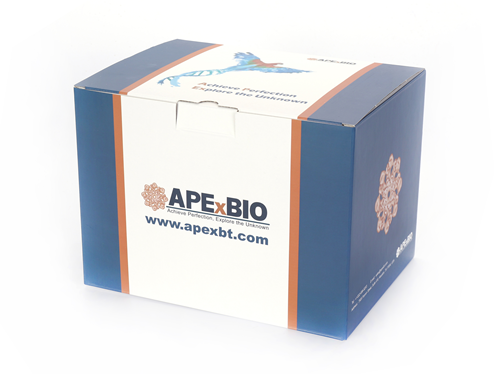Recombinant Mouse IL-4, Tag Free
Interleukin-4 (IL-4) , also known as B cell-stimulatory factor-1, is a monomeric, approximately Th2 cytokine that shows pleiotropic effects during immune responses [1-4]. Mature mouse IL-4 shares 39%, 39%, and 59% aa sequence identity with bovine, human, and rat IL-4, respectively. Human, mouse, and rat IL-4 are species-specific in their activities [5-7]. IL-4 exerts its effects through two receptor complexes [8, 9]. The type I receptor, which is expressed on hematopoietic cells, is a heterodimer of the ligand binding IL-4 R alpha and the common gamma chain. The type II receptor on nonhematopoietic cells consists of IL-4R alpha and IL-13 R alpha 1. The type II receptor also transduces IL-13 mediated signals. IL-4 is primarily expressed by Th2-biased CD4+ T cells, mast cells, basophils, and eosinophils [1, 2]. It promotes cell proliferation, survival, and immunoglobulin class switch to IgG1 and IgE in mouse B cells, acquisition of the Th2 phenotype by naive CD4+ T cells, priming and chemotaxis of mast cells, eosinophils, and basophils, and the proliferation and activation of epithelial cells [10 - 13]. IL-4 plays a dominant role in the development of allergic inflammation and asthma [12, 14]..
Reference
[1]. Benczik, M. and S.L. Gaffen (2004) Immunol. Invest. 33:109.
[2]. Chomarat, P. and J. Banchereau (1998) Int. Rev. Immunol. 17:1.
[3]. Lee, F. et al. (1986) Proc. Natl. Acad. Sci. 83:2061.
[4]. Noma, Y. et al. (1986) Nature 319:640.
[5]. Ramirez, F. et al. (1988) J. Immunol. Meth. 221:141.
[6]. Leitenberg, D. and T.L. Feldbush (1988) Cell. Immunol. 111:451.
[7]. Mosman, T.R. et al. (1987) J. Immunol. 138:1813.
[8]. Mueller, T.D. et al. (2002) Biochim. Biophys. Acta 1592:237.
[9]. Nelms, K. et al. (1999) Annu. Rev. Immunol. 17:701.
[10]. Paludan, S.R. (1998) Scand. J. Immunol. 48:459.
[11]. Corthay, A. (2006) Scand. J. Immunol. 64:93.
[12]. Ryan, J.J. et al. (2007) Crit. Rev. Immunol. 27:15.
[13]. Grone, A. (2002) Vet. Immunol. Immunopathol. 88:1.
[14]. Rosenberg, H.F. et al. (2007) J. Allergy Clin. Immunol. 119:1303.
|
Accession # |
P07750 |
|
Alternate Names |
B cell growth factor 1; BCDF; BCGF1; BCGF-1; binetrakin; BSF1; BSF-1; IL4; IL-4 |
|
Source |
Human embryonic kidney cell, HEK293-derived Mouse IL-4 protein |
|
Protein sequence |
His23-Ser140 |
|
M.Wt |
13.4 kDa |
|
Appearance |
Solution protein |
|
Stability & Storage |
Use a manual defrost freezer and avoid repeated freeze-thaw cycles. - 3 years from date of receipt, -20 to -70°C as supplied. |
|
Concentration |
0. 2 mg/mL |
|
Formulation |
Dissolved in sterile PBS buffer. |
|
Reconstitution |
We recommend that this vial be briefly centrifuged prior to opening to bring the contents to the bottom. This solution can be diluted into other aqueous buffers. |
|
Biological Activity |
The EC50 for this effect is 0.2-1.0 ng/mL. Measured by its ability to induce IL-11 secretion by Saos-2 human osteosarcoma cells. |
|
Shipping Condition |
Shipping with dry ice. |
|
Handling |
Centrifuge the vial prior to opening. |
|
Usage |
For Research Use Only! Not to be used in humans. |
Quality Control & DataSheet
- View current batch:
-
Purity > 95%, determined by SDS-PAGE.
- Datasheet
Endotoxin: <0.010 EU per 1 ug of the protein by the LAL method.








